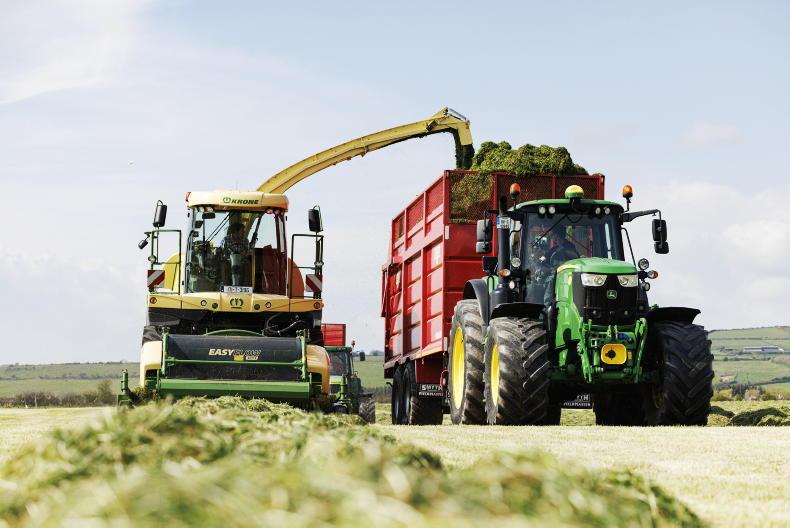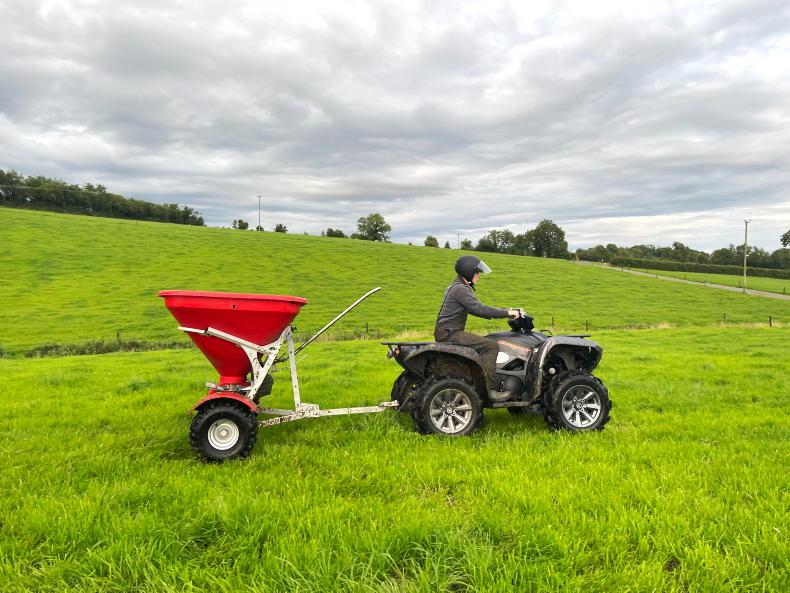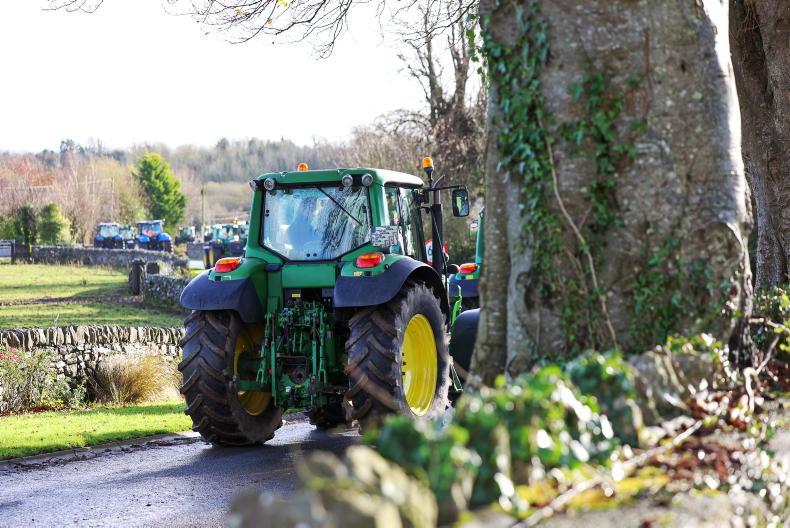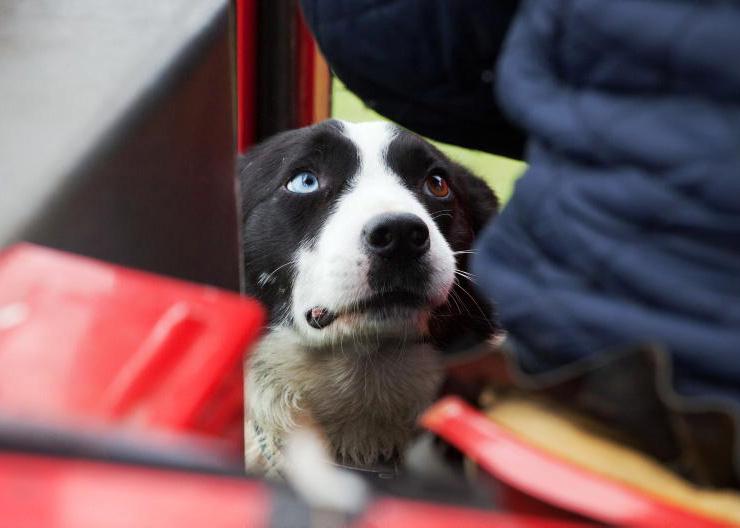Monaghan IFA held a farm safety awareness event in Harte Peat farm outside Clones recently. Marcus O’Halloran, a regional development officer with the IFA, said the aim of the event was to raise awareness of the safety risks on farms and how to avoid becoming another statistic.
Over 200 people attended the Knowledge Transfer-approved event and were given hands-on presentations from the HSA, Teagasc, Latton Bawn Community First Responders and Height for Hire.
Martina Gormley from the HSA gave farmers a flavour of what is involved in a health and safety inspection on farms. She emphasised the aim of the health and safety plan was to ensure the farm is a safe place to work and inspectors were not there to catch people out.
She said inspectors arrive on farms during normal working hours. The inspector asks for a copy of a completed risk assessment or safety statement document specific to the farm.
A farm risk assessment document was sent out to every farm in the country and is also available online. Every farmer should have this document filled out and available for inspection.

Farmers should be aware that there are services available to hire out hoist and lift equipment to make working at heights safer.
Martina says when filling out the form, farmers should walk around their farm and write down anything that needs attention. The inspector may go through the safety statement with the farmer to ensure all safety aspects were taken into consideration. After going through the risk assessment document, the inspector will take a trip around the farm to see if there is anything that needs attention.
At the end of the inspection, the inspector can give verbal advice on aspects of farm safety that need attention. A written report or notice can also be issued with a deadline to comply with the recommendations.
“On re-inspection, if the farmer has not made any attempt to comply with the inspector’s recommendations it will be seen as a clear breach of the law and it may be taken further,” explained Martina.
Working with livestock
Livestock are a major cause of farm fatalities annually. Over the last 10 years, 13% of farm deaths involved livestock. Mairead Kirk from Teagasc said during the last decade over 200 people died in farming-related accidents.
She said that was the same amount of people attending the farm open day.
“Imagine if you didn’t go home today, how would that impact on your families, friends and the farm,” she said.
People don’t need to spend a lot of money on facilities. Improving practices when handling cattle can make a big difference, according to Mairead. She reminded farmers of the HSA’s golden rules for good livestock handling practices, which include:
Work out an escape route or refuge area in advance of working with cattle.Know and understand the basics of cattle behaviour.Make sure persons handling cattle are competent and agile.Try to keep calm when handling them.Use a stick or paddle to assist in directing cattle.Be careful around cows that are calving or with newborn calves as they are more likely to attack. Watch for warning signs of animal aggressiveness and cull fractious and difficult cattle. Where investment is required on farms, Mairead said there is TAMS II funding available to reduce the overall costs of investment. She advised small additions in existing units can also be useful.
For example, adding stock boarding to the sides of cattle crushes is a big help on farms as it entices cattle to move through the chute with less hesitation.
Mairead reminded farmers of the increased dangers with children on farms during the summer holidays. She said farmers need to be aware of all the potential risks when children are present.
Working at heights
From 2008 to 2017, 11% of farm fatalities were as a result of a fall from a height. Mark Farrell from Height for Hire said farmers take risks walking on unstable shed roofs to carry out maintenance and repairs regularly. He said some farmers even use tractor front loaders to access hard-to-reach areas on the farm which is very dangerous.
Companies like Height for Hire specialise in providing farmers with an alternative safer way of working at heights. The most common hoist to suit farmers’ needs is the 20m self-drive, which is a truck with a mounted hoist. It has a working height of 20m (66ft).
“Anyone with a standard B car driving licence can drive this machine on public roads because it is under 3.5t weight,” explained Mark. It costs €275 excluding VAT to hire the machine per day or €575 excluding VAT per week. Insurance costs through Height for Hire are €50/day or €175/week.
The machine is provided with a full tank of diesel but it must be returned with a full tank also. Mark says they will provide farmers with training on how to use the machine and there is full 24/7 phone support too in case problems arise during use.
He says farmers usually hire out a machine for a weekend or a week to carry out repairs on their sheds or painting work. The machine can be delivered but this can come at a cost. Otherwise, it can be collected in the nearest depot to the farm. It is also possible to hire an operator with the machine. This costs €450 excluding VAT for six hours.
Eircode
Latton Bawn Community First Responders said it is very important that farmers should know their Eircode. The Eircode makes it much easier to find an address in Ireland. They said the Eircode makes a huge difference when it comes to response time for first responders and ambulance drivers.
Every householder should have received their Eircode already in the post. If this is not available, you can find your Eircode online using the Eircode finder at www.eircode.ie/
Monaghan IFA held a farm safety awareness event in Harte Peat farm outside Clones recently. Marcus O’Halloran, a regional development officer with the IFA, said the aim of the event was to raise awareness of the safety risks on farms and how to avoid becoming another statistic.
Over 200 people attended the Knowledge Transfer-approved event and were given hands-on presentations from the HSA, Teagasc, Latton Bawn Community First Responders and Height for Hire.
Martina Gormley from the HSA gave farmers a flavour of what is involved in a health and safety inspection on farms. She emphasised the aim of the health and safety plan was to ensure the farm is a safe place to work and inspectors were not there to catch people out.
She said inspectors arrive on farms during normal working hours. The inspector asks for a copy of a completed risk assessment or safety statement document specific to the farm.
A farm risk assessment document was sent out to every farm in the country and is also available online. Every farmer should have this document filled out and available for inspection.

Farmers should be aware that there are services available to hire out hoist and lift equipment to make working at heights safer.
Martina says when filling out the form, farmers should walk around their farm and write down anything that needs attention. The inspector may go through the safety statement with the farmer to ensure all safety aspects were taken into consideration. After going through the risk assessment document, the inspector will take a trip around the farm to see if there is anything that needs attention.
At the end of the inspection, the inspector can give verbal advice on aspects of farm safety that need attention. A written report or notice can also be issued with a deadline to comply with the recommendations.
“On re-inspection, if the farmer has not made any attempt to comply with the inspector’s recommendations it will be seen as a clear breach of the law and it may be taken further,” explained Martina.
Working with livestock
Livestock are a major cause of farm fatalities annually. Over the last 10 years, 13% of farm deaths involved livestock. Mairead Kirk from Teagasc said during the last decade over 200 people died in farming-related accidents.
She said that was the same amount of people attending the farm open day.
“Imagine if you didn’t go home today, how would that impact on your families, friends and the farm,” she said.
People don’t need to spend a lot of money on facilities. Improving practices when handling cattle can make a big difference, according to Mairead. She reminded farmers of the HSA’s golden rules for good livestock handling practices, which include:
Work out an escape route or refuge area in advance of working with cattle.Know and understand the basics of cattle behaviour.Make sure persons handling cattle are competent and agile.Try to keep calm when handling them.Use a stick or paddle to assist in directing cattle.Be careful around cows that are calving or with newborn calves as they are more likely to attack. Watch for warning signs of animal aggressiveness and cull fractious and difficult cattle. Where investment is required on farms, Mairead said there is TAMS II funding available to reduce the overall costs of investment. She advised small additions in existing units can also be useful.
For example, adding stock boarding to the sides of cattle crushes is a big help on farms as it entices cattle to move through the chute with less hesitation.
Mairead reminded farmers of the increased dangers with children on farms during the summer holidays. She said farmers need to be aware of all the potential risks when children are present.
Working at heights
From 2008 to 2017, 11% of farm fatalities were as a result of a fall from a height. Mark Farrell from Height for Hire said farmers take risks walking on unstable shed roofs to carry out maintenance and repairs regularly. He said some farmers even use tractor front loaders to access hard-to-reach areas on the farm which is very dangerous.
Companies like Height for Hire specialise in providing farmers with an alternative safer way of working at heights. The most common hoist to suit farmers’ needs is the 20m self-drive, which is a truck with a mounted hoist. It has a working height of 20m (66ft).
“Anyone with a standard B car driving licence can drive this machine on public roads because it is under 3.5t weight,” explained Mark. It costs €275 excluding VAT to hire the machine per day or €575 excluding VAT per week. Insurance costs through Height for Hire are €50/day or €175/week.
The machine is provided with a full tank of diesel but it must be returned with a full tank also. Mark says they will provide farmers with training on how to use the machine and there is full 24/7 phone support too in case problems arise during use.
He says farmers usually hire out a machine for a weekend or a week to carry out repairs on their sheds or painting work. The machine can be delivered but this can come at a cost. Otherwise, it can be collected in the nearest depot to the farm. It is also possible to hire an operator with the machine. This costs €450 excluding VAT for six hours.
Eircode
Latton Bawn Community First Responders said it is very important that farmers should know their Eircode. The Eircode makes it much easier to find an address in Ireland. They said the Eircode makes a huge difference when it comes to response time for first responders and ambulance drivers.
Every householder should have received their Eircode already in the post. If this is not available, you can find your Eircode online using the Eircode finder at www.eircode.ie/











SHARING OPTIONS